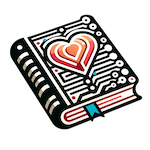I. Graphic Design Basics
1. What is graphic design?
2. What are some of the most common design principles?
3. What are the different kinds of graphic design?
4. What tools do designers use to create their work?
5. What are the different types of software used in graphic design?
II. Color Theory and Typography
6. What do you need to know about color theory?
7. How can you use color theory in graphic design?
8. What is color harmony?
9. How do you decide which colors to use in your designs?
10. Is it better to use bright colors or dark colors in a design? Why?
III. Logo and Branding Design
11. How do you make a logo for a business or organization?
12. What are some examples of good and bad logos?
13. What are some common mistakes designers make when designing a logo?
14. How can you design an effective logo?
15. What is the difference between a logo and a brand?
IV. Layout, Composition, and Grid Systems
16. What do you need to know about layout and composition when designing a page or poster?
17. Why do designers use grids?
18. How do you create a poster for an event or celebration?
19. What is the importance of white space in design?
20. How can you balance text and images in a layout?
V. Visual Literacy and Art Skills
21. What makes an image attractive to you?
22. How can I improve my visual literacy skills?
23. Do you need to be good at art to be a graphic designer?
24. What does it mean to be “good” at art?
25. How can studying art help you in graphic design?
VI. Careers and Skills in Graphic Design
26. What are the skills needed to be a graphic designer?
27. How do you become a graphic designer?
28. What do you need to become a graphic designer?
29. Where can I find good resources for learning graphic design?
30. What is the difference between a graphic designer and a photographer?
VII. Design Process and Communication
31. How do you get started with Photoshop when you have no experience with it?
32. What is a design brief?
33. What is a mockup and what is it for?
34. How do you choose which font to use in your designs? What are some guidelines for choosing a font?
35. What does it mean to be on-brand?
VIII. Unique Design Styles and Examples
36. What are some good examples of graphic design in real life?
37. How can we see a difference between good and bad designs?
38. Why might it be important to have your own unique style or look when designing something?
39. How is graphic design similar to sculpture?
40. What influences your personal design style?
IX. Design for Advertising and Websites
41. Why do we use images in advertisements instead of words only?
42. If you were going to design an ad for your favorite restaurant, what would you put in it?
43. What are some ways to make your website more attractive to visitors?
44. How can you create a call to action in your designs?
45. What are some tips for designing effective social media graphics?
X. Traditional vs. Digital Art
46. Which is better: using a computer or using pencils and paper to create your own art?
47. What are the advantages of digital art over traditional art?
48. Can traditional art skills help in digital art creation?
49. What tools do you need for digital art?
50. How do you choose between traditional and digital methods for a project?
XI. Design Challenges and Solutions
51. How do you overcome creative block in graphic design?
52. What are some effective ways to present design ideas to clients?
53. How do you handle feedback and criticism in graphic design?
54. What do you do if a client doesn’t like your design?
55. How can you stay motivated during difficult projects?
XII. Design Ethics and Sustainability
56. What are the ethical considerations in graphic design?
57. How can graphic designers contribute to sustainable design practices?
58. How can designers create accessible designs for people with disabilities?
59. What is the role of ethics in advertising design?
60. How can you design with the environment in mind?



